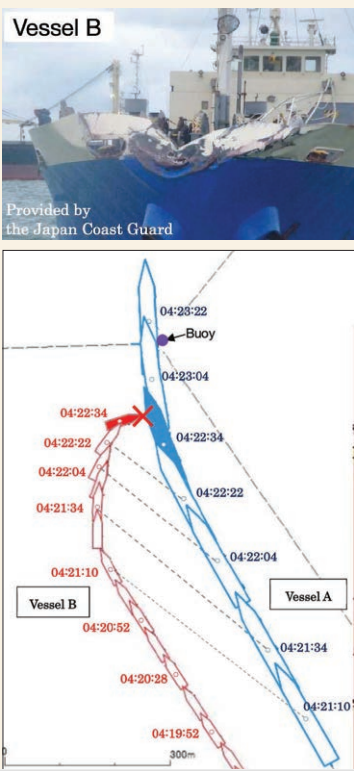The Nautical Institute presents an incident where, the pilot of Vessel A observed Vessel B cross their bow from starboard to port about 0.5nm ahead. Based on this action, the pilot assumed the vessel was headed for the North exit of the Traffic Separation Scheme (TSS).
The incident
It was making way at about 13 knots, gaining slowly on Vessel B which was making about 10 knots. Up to this point there had been no VHF communication between the two vessels. Vessel A continued to gain on Vessel B, and it appeared they would pass Vessel B on their port side at a distance of about 200 metres.

Meanwhile, on Vessel B, the lone watch keeper was contacted by the local Vessel Traffic Services (VTS) on VHF. VTS inquired if they were headed to ‘K’ anchorage. The OOW, although unsure of the exact anchorage, responded in the affirmative. The VTS then informed the OOW that in order to make ‘K’ anchorage they were required to navigate the Traffic Separation Scheme (TSS) on their starboard side. The OOW was surprised, but took the VTS advice as an order. He knew he had to act quickly to enter the TSS, so he informed VTS he was coming to starboard. He knew there was a vessel astern, but without verifying, he assumed it was still some way behind.
The local VTS immediately called Vessel A on VHF and informed the bridge team that Vessel B was destined for an anchorage and that the vessel would take the appropriate TSS to starboard. At about the same time, the pilot of Vessel A saw Vessel B begin to turn sharply to starboard, which meant that this vessel would cut in front his vessel. He attempted to call Vessel B on VHF but there was no response. He ordered the main engine be put to stop, while the Master simultaneously ordered hard to starboard. At the same time the OOW of Vessel A blew a long blast on the whistle. Despite all this, a collision was now unavoidable and Vessel B collided with the port side of Vessel A. The starboard bow of Vessel A then struck the navigation buoy that had been close to starboard.
Lessons learned
- Assumptions made by both vessel operators on the actions or position of the other vessel contributed to this accident. Keep your situational awareness honed sharp and communicate with other vessel operators to augment understanding and shared mental models.
- When passing another vessel close by, as in this case about 200m, it may be advisable to have a mutual understanding of the manoeuvre.































































